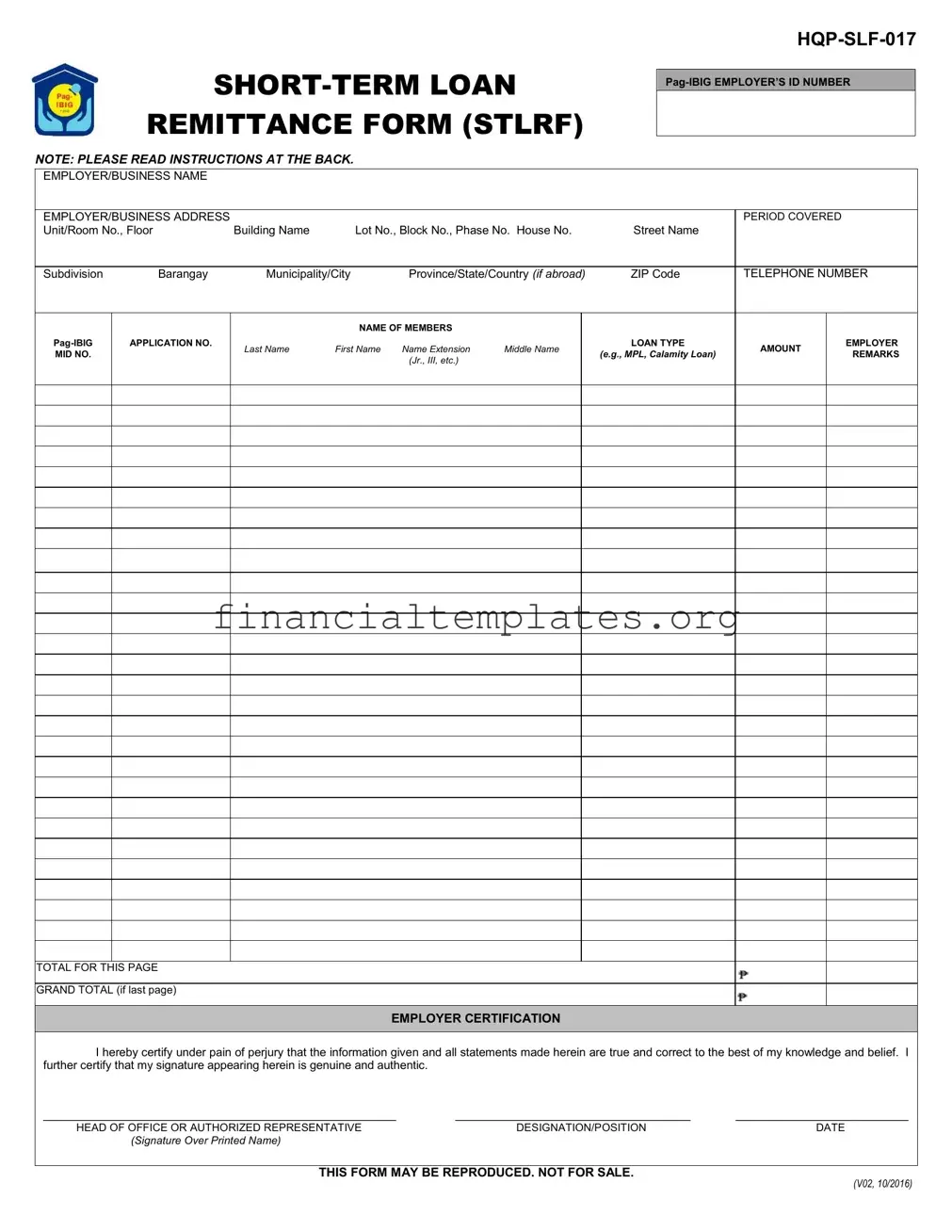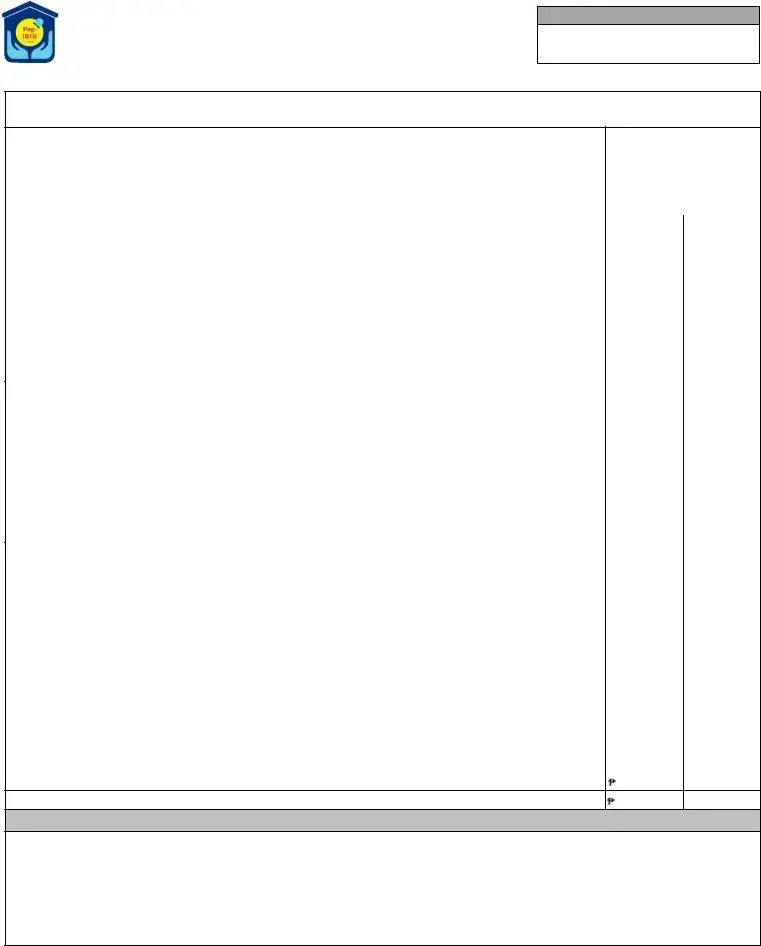a.Type or print all entries in BLOCK or CAPITAL LETTERS.
b.Accomplish this form in softcopy when making remittances to Pag-IBIG Fund or to any accredited collecting partner on or before the fifteenth (15th) day of the month.
c.A separate Short-Term Loan Remittance Form (STLRF) should be accomplished per type of payment (whether cash or check payment) and in case Credit Memo shall be applied as payment to the Fund.
d.In case there is a correction in the remittance which resulted to overpayment, the employer shall advise the Fund. Once validated, a Notice of Overpayment and Credit Memo shall be issued to the employer. From the date of issuance of the said Notice, the employer may request, not later than six (6) months for refund of the excess amount or have it applied to the future remittance with the Fund.
e.The total amount to be remitted should be equal to the total amount reflected on the STLRF. Check payments should be made payable to Pag-IBIG Fund and shall be posted upon clearing (clearing policy shall not be applicable to National Government Agency (NGA), instead payment shall be posted within 72 hours upon receipt of collection).
12
13
f.Failure or refusal of the Employer to pay or to remit the contributions herein prescribed shall not prejudice the right of the covered employee to the benefits under the Fund. Such Employer shall be charged a penalty equivalent to 1/10 of 1% per day of delay of the amount due starting on the first day immediately following the due date until the date of full settlement.
1 Pag-IBIG Employer’s ID No. – assigned Pag-IBIG Employer’s ID Number.
2Employer/Business Name – per DTI/SEC Registration.
Employer/Business Address - indicate Unit/Room No., Floor,
3Building Name or Lot No., Block No., Phase No. or House No. and Street Name, Subdivision, Barangay, Municipality/City, Province, and ZIP Code.
4Period Covered – indicate the applicable month and year of MS remittance in the following format: yyyy/mm.
5Telephone Number – indicate current telephone number.
6Pag-IBIG MID No. – indicate the borrower’s assigned Pag-IBIG Membership Identification (MID) Number.
7Application No. – indicate the borrower’s loan application number per type of loan.
8Name of Borrower – indicate borrower’s complete name in the following format: Last Name, First Name, Name Extension (Jr., III, etc.), Middle Name
Loan Type – indicate if payment is intended for Multi-Purpose
9 Loan (MPL) or Calamity Loan (CL) in the following format: MPL or
CL
10Amount – indicate the amount due as indicated in the latest billing statement
Employer Remarks – accomplish this portion only to report
11changes in the borrower’s employment status and to update any information regarding the borrower. Indicate the appropriate code and effectivity date in the following formate (mm/dd/yy) on the space provided. Please refer to the following codes and examples.
N |
- Newly Hired |
Examples |
L |
- Leave Without Pay/AWOL |
1. |
N: |
1/4/2013 |
RS |
- Resigned/Separated |
2. |
L: |
1/21/2013 |
RT |
- Retired |
3. |
RS: 1/3/2013 |
D |
- Deceased |
4. |
D: |
1/14/2013 |
O- Others, please specify reason
12Indicate the total amount due per page.
Indicate the grand total of the total amount due if this is the last
13page.
14Employer Certification - to be accomplished and duly signed by the Head of Office/Authorized Representative.


